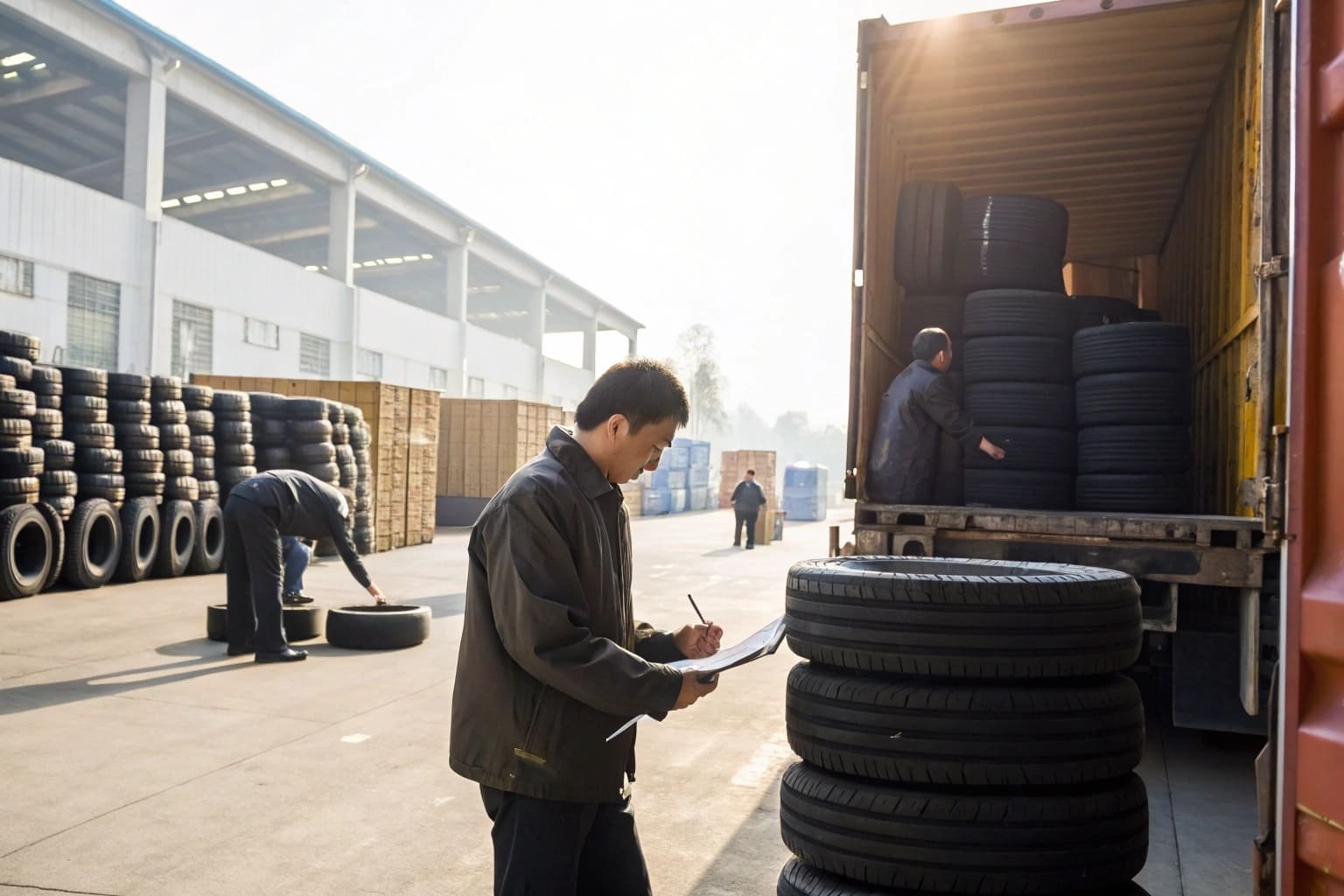Choosing the right shipping terms can make or break your business. Confusion over who is responsible for risks and costs can lead to costly mistakes. Carriage and Insurance Paid To (CIP) is one such Incoterm that often leaves traders uncertain. However, mastering this rule can save your business from unexpected surprises and simplify your global transactions. In this guide, we'll break down what CIP means, how it compares to other Incoterms like CIF and FOB, and when it's the best option for your international trade deals.
What Is Carriage and Insurance Paid To (CIP) in Incoterms?
Carriage and Insurance Paid To (CIP) is an international commercial term (Incoterm) where the seller is responsible for delivering goods to a specified destination in the buyer’s country, covering both carriage and insurance costs up to the point of delivery. The buyer takes responsibility for risks once the goods are handed over to the first carrier at the origin.
In simpler terms, CIP is about the seller managing the logistics and insurance to ensure that the goods reach the buyer’s designated location safely. The key aspect of CIP is that it transfers risk to the buyer much earlier—when the goods are handed over to the carrier—not when they arrive at the final destination.
Seller's Obligations Under CIP:
- The seller must organize and pay for the transportation of the goods to the agreed destination.
- The seller is responsible for obtaining insurance, ensuring the goods are covered for loss or damage until they reach the first carrier.
- The seller handles all export clearance procedures and documentation.
- The seller bears all risks up until the goods are handed to the first carrier.
Buyer’s Responsibilities When Using CIP:
- The buyer assumes the risk for the goods once they are handed over to the first carrier.
- Any further transportation costs beyond the destination specified in the contract are borne by the buyer.
- Import duties, taxes, and customs clearance are also the buyer's responsibility.
How Does CIP Differ from CIF?
While CIP and CIF (Cost, Insurance, and Freight) may seem similar at first glance, they differ in important ways. CIF is specifically for sea and inland waterway transport, whereas CIP can be used for all modes of transportation. Additionally, CIF requires only a minimum level of insurance, whereas CIP mandates that the seller provides maximum insurance coverage.
CIP vs. CIF and FOB: Which Is Better for International Traders?
| Aspect | CIP (Carriage and Insurance Paid To) | CIF (Cost, Insurance, and Freight) | FOB (Free on Board) |
|---|---|---|---|
| Applicable Transport Modes | Applies to all modes of transport (sea, air, road, rail) | Applies only to sea and inland waterway transport | Applies only to sea and inland waterway transport |
| Risk Transfer | Risk transfers to the buyer once the seller hands over the goods to the first carrier | Risk transfers to the buyer once the seller loads the goods onto the ship | Risk transfers to the buyer once the goods pass over the ship’s rail |
| Insurance Responsibility | The seller must provide insurance covering at least 110% of the contract value | The seller only needs to provide minimum insurance coverage | The seller is not required to provide insurance |
| Transportation Costs | The seller is responsible for transportation costs up to the destination | The seller is responsible for transportation costs up to the destination port | The seller is only responsible for transportation costs until the goods are loaded onto the ship |
| Best Suited For | Multimodal transport, high-value goods, international shipments | Primarily for sea transport, especially bulk goods | Sea transport where the buyer wants more control over shipping |
Understanding Insurance Requirements Under CIP
One of the critical aspects of Carriage and Insurance Paid To (CIP) is the seller's responsibility for providing insurance coverage. Under the CIP rule, the seller must obtain insurance that covers at least 110% of the goods’ value as specified in the sales contract. This ensures that the buyer is protected from any loss or damage to the goods during transit.
What Is Covered by CIP Insurance?
The insurance must cover all risks associated with the goods during transportation up to the point where the risk transfers to the buyer (i.e., when the goods are handed to the first carrier). This includes loss, theft, or damage during shipment. However, it’s important to note that the insurance typically covers the minimum risk requirements unless otherwise specified in the contract.
The Seller’s Role in Arranging Insurance
The seller is responsible for ensuring that adequate insurance is in place. While CIP requires maximum insurance, traders are advised to review the terms of the insurance to confirm that it aligns with the contract’s terms. This can be particularly important if the goods being shipped are high-value or fragile, as additional coverage may be necessary to protect both the seller and buyer.
Buyer’s Role in Ensuring Insurance Adequacy
While the seller arranges the insurance, buyers should carefully review the coverage to ensure that it meets their needs. Buyers can request to see the insurance certificate and verify that it is issued in their name, as this guarantees that they will be the beneficiary in case of any claims. If the buyer feels the seller’s coverage is inadequate, they may arrange for additional insurance at their own cost.
When Should Traders Use CIP Incoterms?
International traders have several Incoterms to choose from, and knowing when to use CIP is crucial for effective trade management. CIP is ideal in situations where the seller wants to retain control over the delivery process and insurance while minimizing risk. It is especially suited for:
Ideal Scenarios for Using CIP:
- Multimodal Transport: CIP can be used for any form of transport, making it versatile for goods that need to travel by more than one method (e.g., from truck to ship, then to rail).
- Shipments to Inland Destinations: For goods that need to reach a location beyond the port, CIP offers the advantage of covering transport costs beyond just loading onto a ship, as seen with CIF.
- High-Value Goods: CIP provides better insurance coverage (at least 110% of the value) compared to other terms like CIF, making it a better option for traders dealing with high-value or delicate goods.
- Sellers Who Want Control: Sellers who want to minimize the buyer's responsibility for organizing transport and insurance will benefit from using CIP.
Common Mistakes to Avoid When Using CIP
Even though CIP provides clear advantages, traders can make several costly mistakes if they’re not careful. Here are the most common mistakes to avoid:
1. Misunderstanding the Point of Risk Transfer
A common error traders make is assuming that the seller is responsible for the goods until they reach the final destination. Under CIP, the risk shifts to the buyer once the goods are handed to the first carrier, not when they arrive at the buyer’s location.
2. Not Verifying Insurance Coverage
Sellers may comply with the minimum insurance requirement, but buyers need to ensure that this coverage is adequate. It’s a good practice for the buyer to request the insurance certificate and verify the details of the coverage. Failing to do so can leave the buyer vulnerable if an issue arises during transit.
3. Overlooking Import Responsibilities
Buyers often assume that all costs are covered under CIP, but this is not the case. Import duties, taxes, and customs clearance are the buyer’s responsibility. Not preparing for these costs can result in unexpected financial burdens and delays.
Tips to Ensure Smooth Trade Transactions with CIP:
- Clearly define the point of risk transfer in the contract to avoid misunderstandings.
- Review insurance policies to ensure they meet the needs of both parties.
- Communicate with the buyer or seller to ensure all responsibilities are clearly understood.
CIP Incoterms: Revenue Recognition and Accounting
For international traders, understanding how revenue is recognized under CIP Incoterms is important for accurate accounting and financial reporting.
When Is Revenue Recognized Under CIP?
Revenue under CIP is typically recognized when the goods are handed over to the first carrier, as this is when the buyer assumes the risk. This means that the seller can record the revenue in their financial statements at this point, even if the goods have not yet reached their final destination.
Accounting for Costs Under CIP
Sellers must account for the costs of carriage and insurance when using CIP. These costs are typically included in the sale price and should be allocated accordingly in the seller’s financial records. Similarly, buyers should prepare to account for any additional costs they incur after risk has been transferred, such as further transport or import duties.
A Practical Example of CIP in Use
To illustrate how CIP works in real-world scenarios, we’ll explore several examples across different industries and transport modes.
Example 1: Electronics Shipment from the United States to Germany
Scenario: A US-based seller ships high-value electronic components to a German buyer.
- Contract Agreement: The seller and buyer agree to use CIP for the shipment of electronic components.
- Seller's Obligations: The seller arranges transportation to Hamburg, Germany, and secures insurance that covers 110% of the contract value. They also handle export documentation and customs clearance.
- Risk Transfer: The risk passes to the buyer when the goods are handed over to the shipping company at the port of departure in New York.
- In Transit: The goods are transported by sea, but during the journey, part of the shipment is damaged in a storm. Fortunately, the seller’s insurance covers the damage, and the buyer is compensated upon arrival in Hamburg.
- Buyer’s Responsibilities: The buyer clears the goods through customs in Germany and handles the inland transport to their warehouse.
Example 2: Agricultural Products from Brazil to France
Scenario: A Brazilian exporter ships agricultural goods (coffee beans) to a French importer.
- Contract Agreement: The parties agree to use CIP to cover the transport from Brazil to a port in France.
- Seller's Obligations: The Brazilian seller arranges sea transportation and covers insurance for the shipment. They handle export formalities and ensure that the goods are properly packed for transit.
- Risk Transfer: The risk transfers to the buyer as soon as the goods are handed to the first carrier in Rio de Janeiro.
- Insurance Coverage: During transit, part of the shipment is affected by moisture damage. Since the seller had arranged adequate insurance, the buyer files a claim, and the loss is compensated.
- Buyer’s Responsibilities: The buyer is responsible for import duties and the subsequent transport of the coffee beans to their roastery in France.
Example 3: Multimodal Transportation of Automotive Parts
Scenario: A South Korean manufacturer ships automotive parts to a Canadian buyer.
- Contract Agreement: The two parties agree on CIP with delivery to Toronto, Canada, as the final destination.
- Seller’s Obligations: The South Korean seller arranges for the shipment by sea to Vancouver, followed by rail transport to Toronto. They also secure insurance for the entire journey and prepare the export documents.
- Risk Transfer: The risk passes to the buyer once the goods are handed over to the carrier at the port in Busan.
- Multimodal Transport: The goods are shipped by sea to Vancouver and then transferred to rail for delivery to Toronto. During the rail portion of the journey, the goods are delayed due to a strike. While the buyer is now responsible for the goods, the delay was covered under the insurance, allowing the buyer to claim compensation for additional costs incurred due to the delay.
- Buyer’s Responsibilities: The buyer arranges the final leg of transportation from the rail terminal in Toronto to their factory.
The Evolution of CIP Incoterms
The Incoterms® (International Commercial Terms) were first introduced by the International Chamber of Commerce (ICC) in 1936 to standardize trade practices worldwide. Since then, these terms have undergone several updates to reflect the changing nature of global trade, with the most recent version being Incoterms 2020.
Key Changes in the CIP Incoterm
One of the notable updates in Incoterms 2020 related to CIP is the requirement for maximum insurance coverage. In earlier versions, the insurance requirement under CIP was less stringent, which often left buyers underinsured. Under the new terms, the seller must now provide all-risk insurance, covering at least 110% of the contract value. This change was introduced to provide more protection for buyers, especially in scenarios involving high-value goods or risky transportation routes.
Another important update in the 2020 version is the clarification of the risk transfer point. The point at which the risk transfers to the buyer (when the goods are handed to the first carrier) has been further emphasized to ensure both parties understand their respective responsibilities.
Why These Changes Matter
For international traders, understanding these changes is crucial. Inadequate insurance or misunderstanding the point of risk transfer can lead to disputes, financial losses, or delays in resolving claims. By staying informed about these updates, traders can avoid costly mistakes and negotiate better terms in their contracts.
CIP and Regional Differences
The application of CIP Incoterms can vary depending on regional legal frameworks and customs practices. For example, European Union countries may have different documentation requirements for goods imported under CIP than countries in Southeast Asia or Africa. These regional differences can impact how contracts are structured and how risks are assessed.
CIP in Europe
In Europe, CIP is commonly used for shipments involving road, rail, and air transport. European importers often expect the seller to handle all transportation arrangements, including insurance, up to the buyer’s facility. This is particularly useful for shipments that cross multiple borders within the EU, where the seller takes on more responsibility.
CIP in Asia
In Asia, there may be variations in how customs documentation is handled, and traders may need to be more diligent about verifying the adequacy of insurance coverage. For instance, in certain Southeast Asian countries, additional insurance might be required due to the high risk of natural disasters, such as typhoons or floods, which could impact sea freight.
CIP in North America
North American traders typically use CIP for large, multimodal shipments, especially those involving rail transport. However, buyers and sellers alike must carefully negotiate terms around import duties and insurance to account for additional risks during long inland transport.
In-depth Case Studies: CIP in Different Industries
Case Study 1: Electronics Industry
A US electronics manufacturer ships a consignment of high-end computer processors to a buyer in Japan under CIP terms. The seller arranges air transport and insures the shipment for 110% of its value. Upon arrival in Japan, the processors are found to be damaged due to mishandling during loading. The buyer files a claim, and the insurance covers the cost of replacing the damaged items. This case highlights the importance of proper insurance when shipping fragile, high-value goods.
Case Study 2: Automotive Parts Industry
An automotive parts supplier in Germany ships engine components to a factory in Mexico using CIP. The seller organizes multimodal transport, combining sea and rail freight, and provides insurance for the full journey. Due to a customs delay in Mexico, the shipment is held for several days. The buyer bears the risk at this stage but is compensated for the delay thanks to the all-risk insurance policy, showcasing how CIP’s insurance provisions protect buyers in case of unforeseen delays.
Case Study 3: Agricultural Goods Industry
A coffee exporter in Brazil ships organic coffee beans to a distributor in Italy. The shipment, under CIP terms, is transported by sea and rail. During the sea voyage, part of the shipment is damaged by moisture. The seller had secured comprehensive insurance, allowing the buyer to recover the losses. This case illustrates how essential proper packaging and insurance are when dealing with perishable goods.
Conclusion: Mastering CIP for International Trade
By understanding Carriage and Insurance Paid To (CIP) and its intricacies, international traders can significantly reduce their risks and streamline their logistics. Whether you are shipping high-value electronics, perishable agricultural products, or automotive parts, CIP Incoterms provide a reliable framework that offers protection for both buyers and sellers. However, as with any Incoterm, clear communication, proper documentation, and a thorough understanding of the risks and responsibilities are key to ensuring a smooth transaction.






